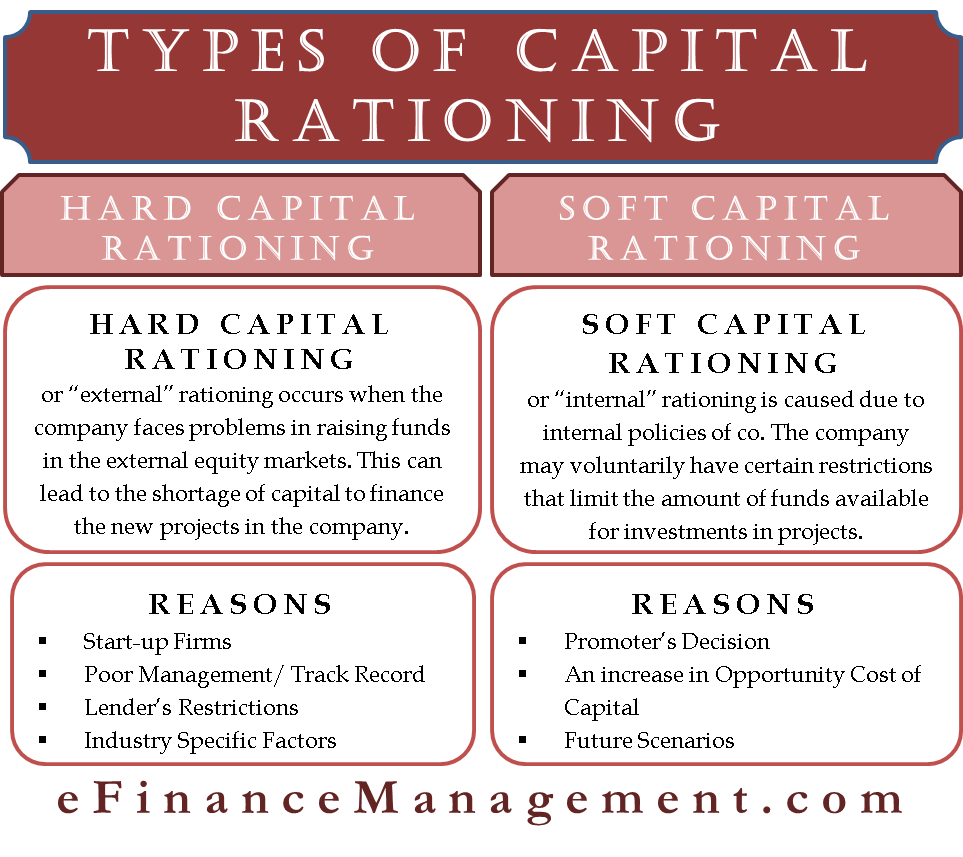
Types of Capital Rationing Hard and Soft
Discuss the reasons why hard and soft capital rationing occur. (5 marks) The requirement provides a good illustration of the importance of ensuring that the question is being answered. It does not ask for an explanation of what hard and soft capital rationing are, but instead for the reasons why the different types of capital rationing occur.
:max_bytes(150000):strip_icc()/CapitalRationing-b258e8b984b94ab4b3906e65c4b4d79c.jpg)
What Is Capital Rationing? Uses, Types, and Examples
Soft rationing is when capital is restricted based on internal policies and limitations. What is Capital Rationing? Capital rationing is the deliberate restriction of capital.

Capital Rationing AwesomeFinTech Blog
Soft capital rationing is the situation in which company decides to restrict itself from making a new investment. The company actually has enough capital to invest in more projects but they decide to make the investment on a highly profitable project. There are many reasons behind the soft capital rationing.

Capital Rationing, Managing, Types, and Impact
While hard rationing can be challenging for a business, it's sometimes unavoidable. Yet, soft rationing can be an excellent tool for financial management and strategy in a well-functioning market. Capital Rationing Process. In the capital rationing process, the first step is typically assessing whether there is a need to ration capital at all.
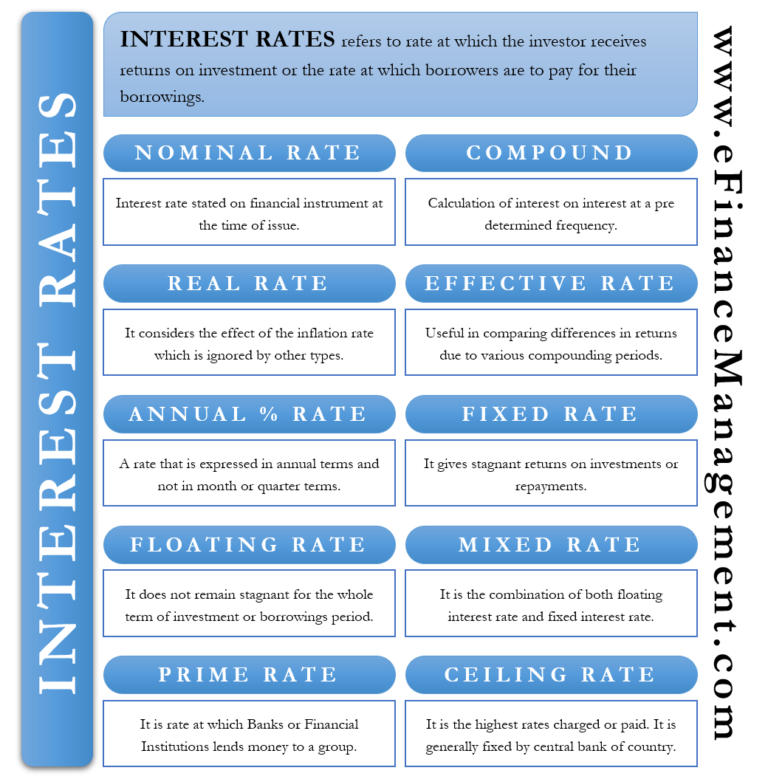
Types of Capital Rationing Hard and Soft
Soft capital rationing: A company may impose its own rationing on capital. This is contrary to the rational view of shareholder wealth maximisation. Reasons for hard or soft capital rationing. Single and multi-period capital rationing. Single-period capital rationing: Shortage of funds for this period only.

Capital Rationing A Complete Guide on Capital Rationing with Types
Reasons for Soft Capital Rationing Promoters' Decision An increase in Opportunity Cost of Capital Future Scenarios Single Period and Multi-Period Capital Rationing Conclusion On the other hand, soft capital rationing or "internal" rationing is caused due to the internal policies of the company.
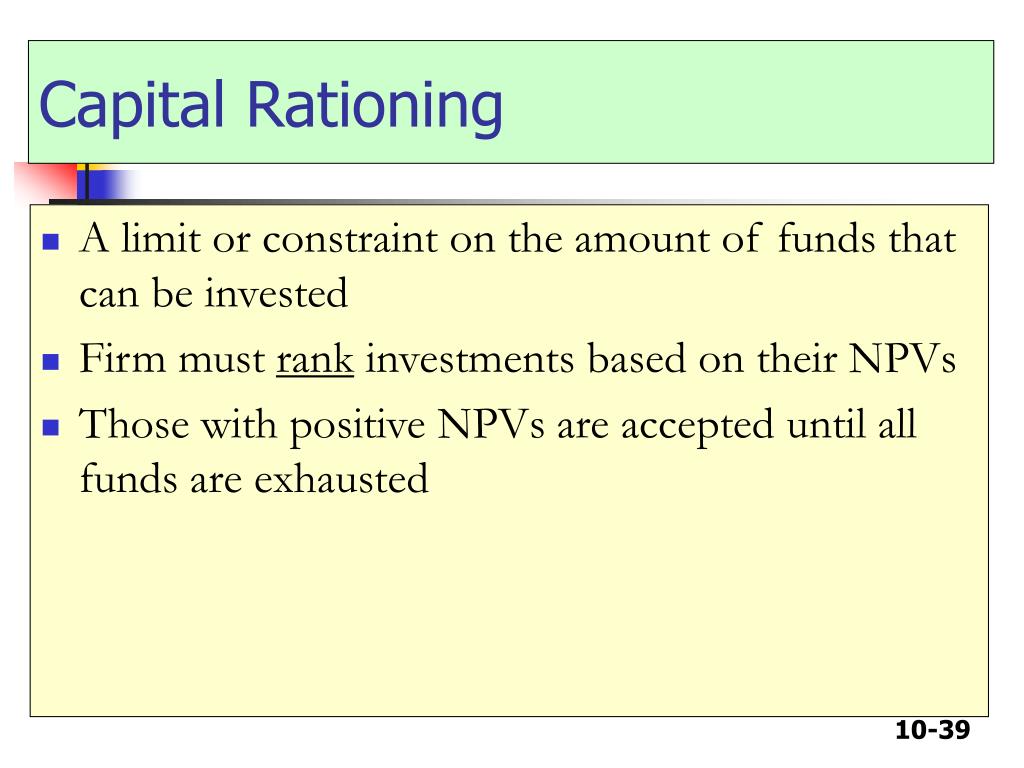
PPT CHAPTER 10 The Basics of Capital Budgeting PowerPoint Presentation ID4687125
Soft capital rationing A company may impose its own rationing on capital. This is contrary to the rational view of shareholder wealth maximisation. Reasons for capital rationing Single and multi-period capital rationing Capital rationing can apply to a single period, or to multiple periods.
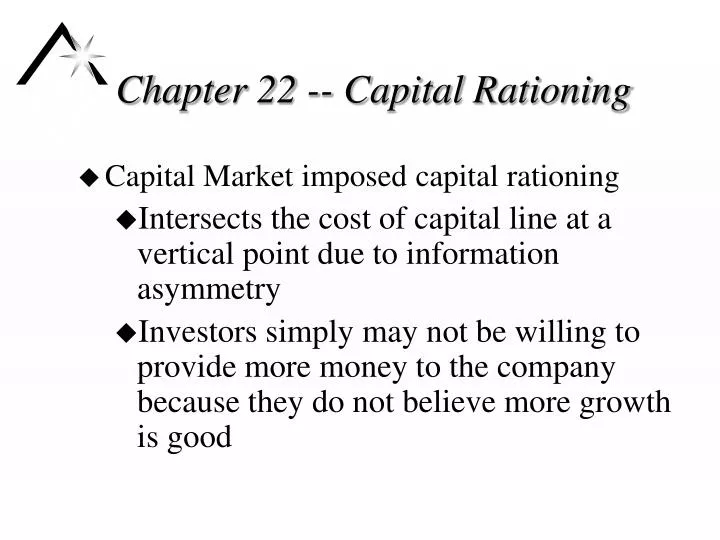
PPT Chapter 22 Capital Rationing PowerPoint Presentation, free download ID1807985
Soft capital rationing, also known as internal rationing, is based on the internal policies of the company. A fiscally conservative company, for example, may require a particularly high.
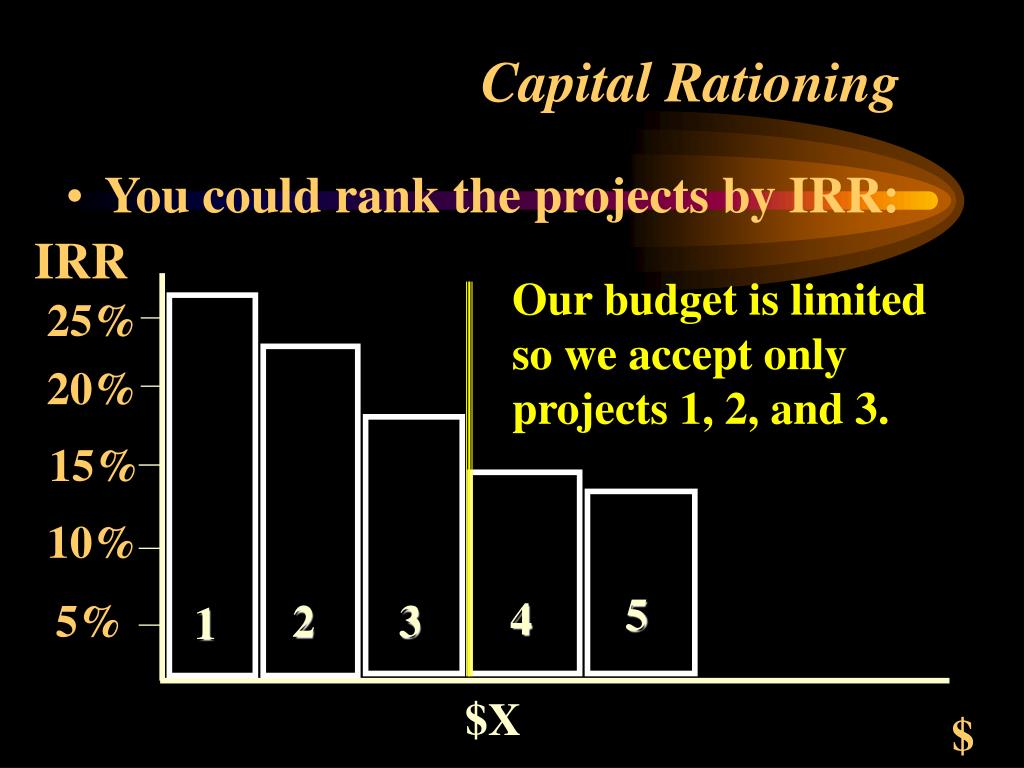
PPT Chapter 10 Cash Flows and Other Topics in Capital Budgeting PowerPoint Presentation ID
"Soft" capital rationing. Constraints on spending that under certain circumstances can be violated or even viewed as constituting targets rather than absolute limits. Most Popular Terms:

PPT Project Analysis and Evaluation PowerPoint Presentation, free download ID4686722
Soft rationing is when the practice of limiting the usage of capital funds for diverse projects by constraints set by management. Capital rationing is caused due any limitations imposed by the management or not having enough people or knowledge to complete all the projects.

1 Chapter 7 NPV and Other Investment Criteria
Capital rationing can be hard (external) or soft (internal), driven by factors like difficulty raising funds or internal policies. While capital rationing offers benefits like efficient resource use, it may favor short-term profits over long-term growth and requires careful consideration of return rates. Understanding Capital Rationing
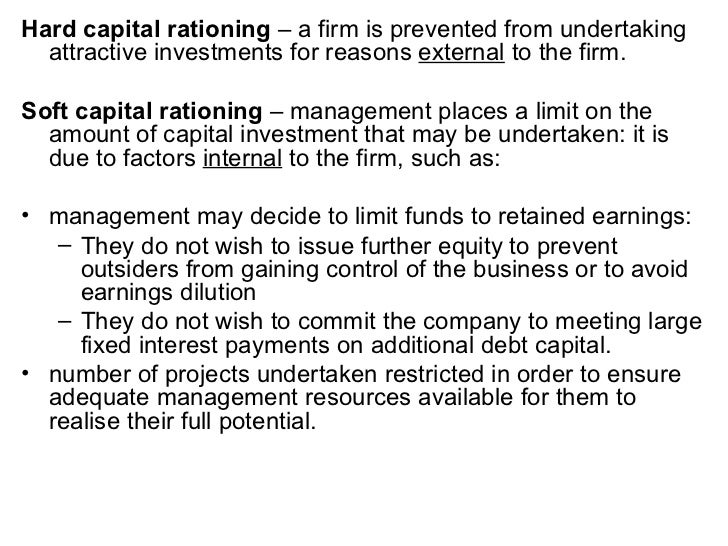
Capital budgeting
SOFT CAPITAL RATIONING Company imposes it's own spending restriction. (This goes against the concept of shareholder maximisation - which occurs by always investing in positive NVP projects ) - why? Reasons for Soft Capital Rationing Limited management skills in new area Want to limit exposure and focus on profitability of small number of projects

Capital Rationing Soft, hard, single and multi period, Management Accounting Lecture Sabaq.pk
Reasons for Soft Capital Rationing . Limited management skills in new area. Want to limit exposure and focus on profitability of small number of projects. The costs of raising the finance relatively high. No wish to lose control or reduce EPS by issuing shares. Wish to maintain s high interest cover ratio

The Different Capital Budgeting Tools For Capital Rationing
What is Capital Rationing? Capital rationing is a part of the capital budgeting process of a company in which it places restrictions on the capital it uses for new projects or investments. Companies can also use capital rationing to limit the number of projects that they undertake at a single time.
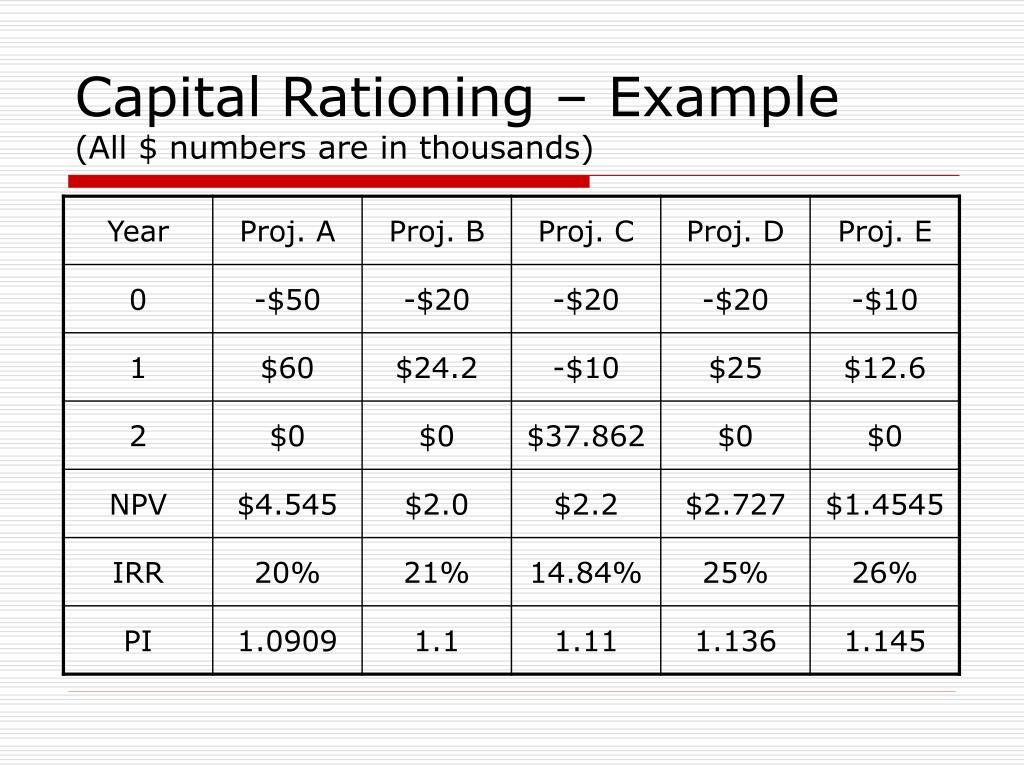
PPT Capital Budgeting PowerPoint Presentation, free download ID257260
Soft Capital Rationing It is when the management imposes the restriction. Hard Capital Rationing It is when external sources limit the capital infusion. Also read Advantages and Disadvantages of Capital Rationing Capital Rationing Decisions These decisions are made by managers to attain the optimum utilization of the available capital.

Capital Rationing Its Assumptions, Advantages and Disadvantages
Hard rationing occurs when there is no way to raise more capital. The capital budget cannot be increased in any way. Soft rationing occurs when departments within a company are able to increase their allocated capital budget if they can justify to company management that the additional resources will create shareholder value.